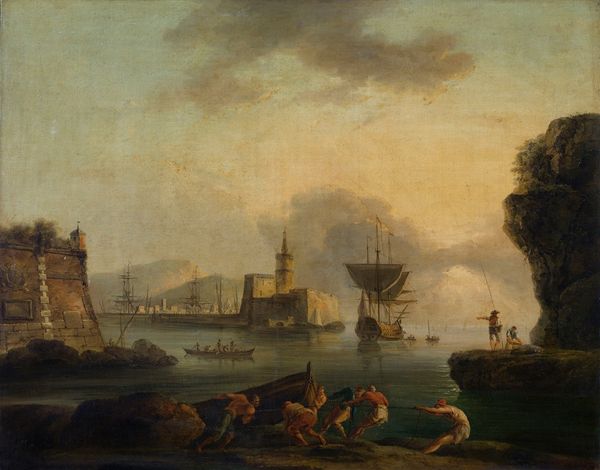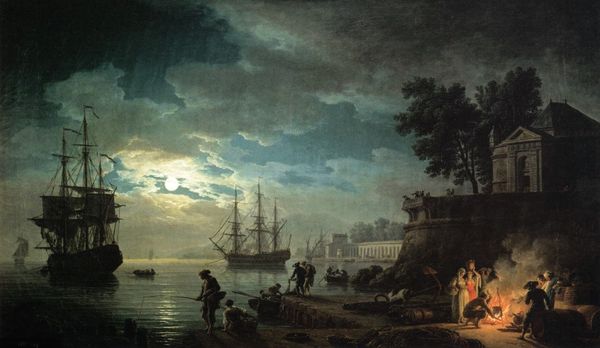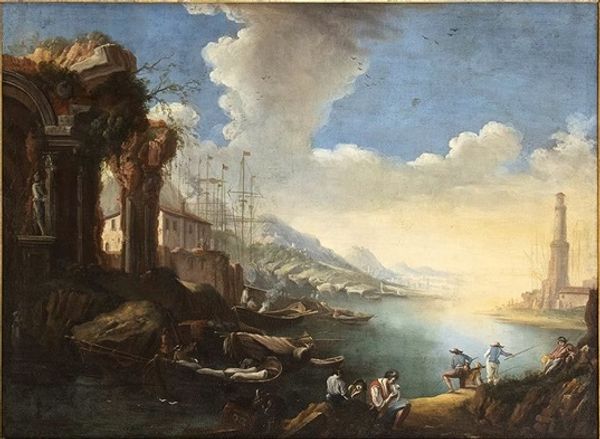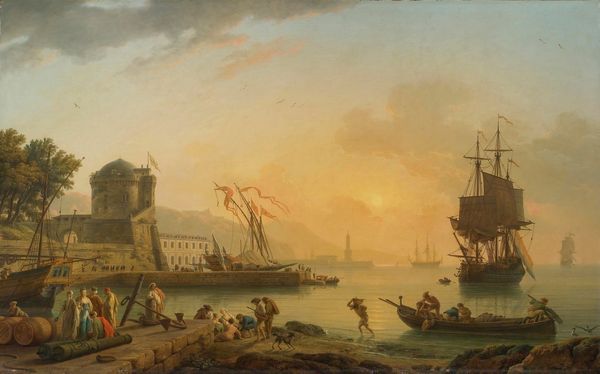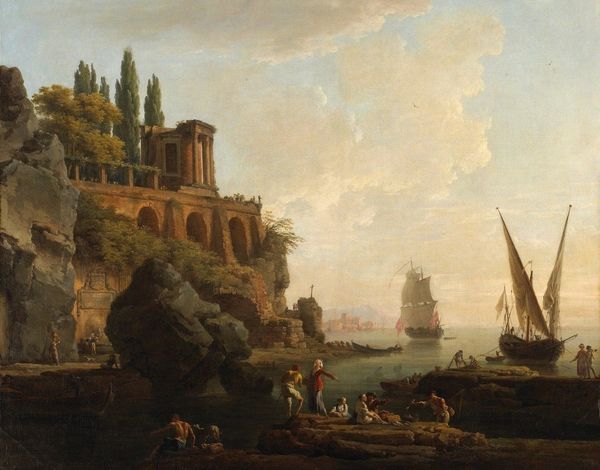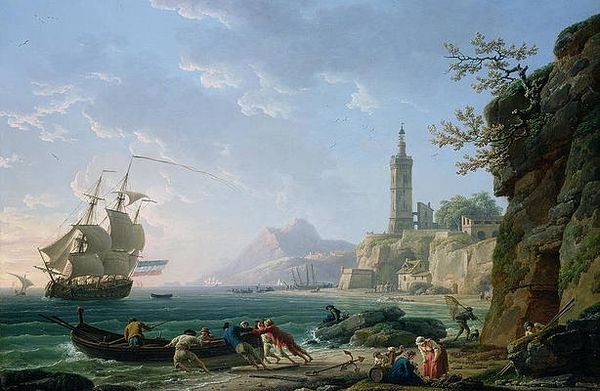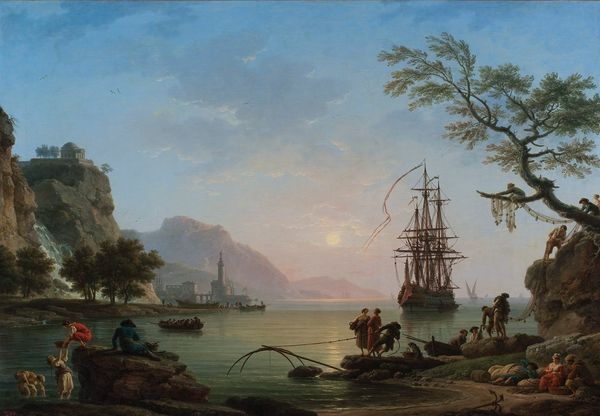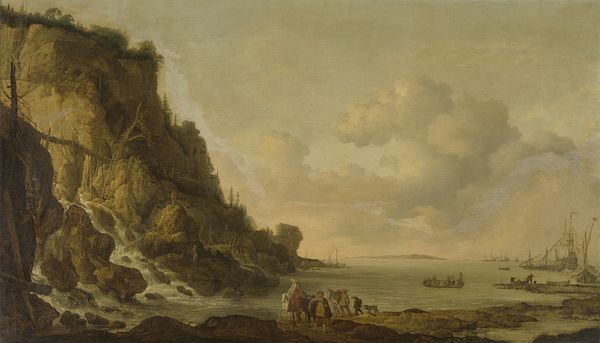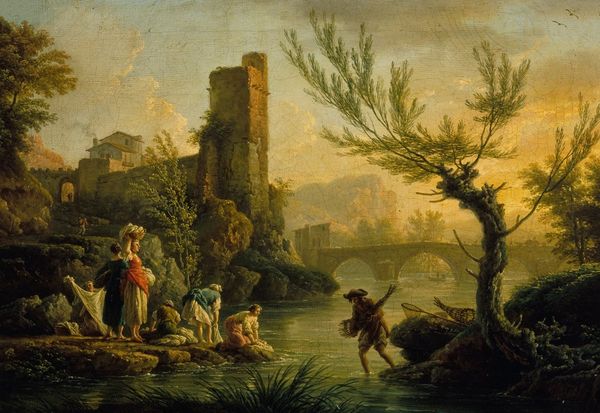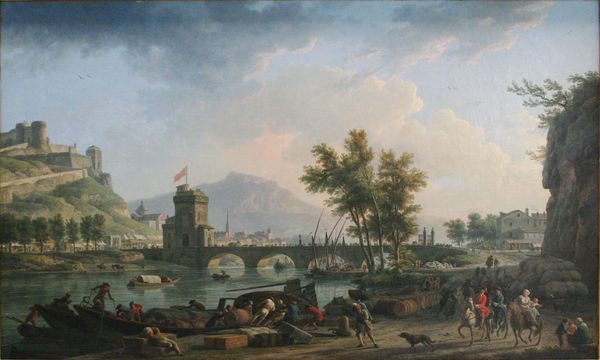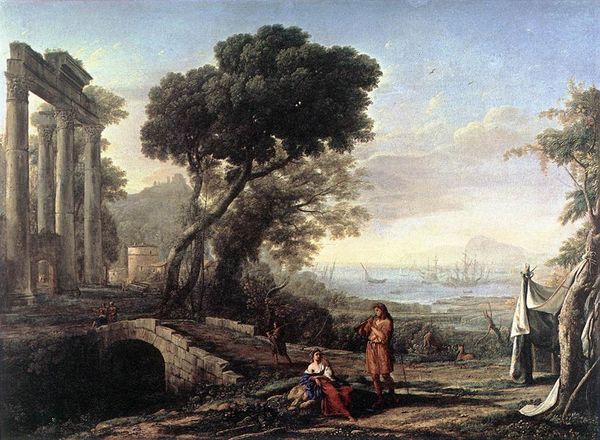
painting, oil-paint
#
baroque
#
painting
#
oil-paint
#
landscape
#
perspective
#
figuration
#
oil painting
#
romanticism
#
cityscape
#
genre-painting
#
history-painting
#
realism
Copyright: Public Domain: Artvee
Curator: We’re looking at “Fishers at the Sunrise”. The artwork is attributed to Claude-Joseph Vernet, though the exact date remains unknown. Editor: Immediately, what strikes me is the overall tonal range. It’s luminous, bathed in a soft, almost ethereal light. The color palette is limited, relying heavily on muted yellows, blues, and greens, which unifies the composition. Curator: Vernet was particularly successful in portraying atmospheric perspective in maritime landscapes. The way the sun’s glow illuminates the coastal structures gives us a glimpse of society life and landscape appreciation. The depicted port with fishermen reflects broader economic activities. Editor: Precisely. Note how the light catches the edges of the clouds, subtly modeling the forms and guiding our eyes towards the central figures. Also, the contrast in textures: rough, jagged rocks against the smoothness of the water, contributes a lot. Curator: Those fishermen aren’t mere decoration; they represent the labor force that propelled the 18th-century port economy. We see a blend of classical landscape tropes and elements of everyday life, that shows how the artist’s social world informed his art. Vernet lived through periods of intense upheaval. His art indirectly refers to ideas on class structures and economics through depiction of ordinary workers. Editor: Perhaps, but let’s consider the formal arrangement too. The artist masterfully uses line to lead us into the composition. See how the line formed by the coastline flows into the distance, interrupted by the ship and how they relate with other key points. It makes for a rhythmic visual experience, drawing your eyes to different focal points. Curator: It’s interesting to see these interpretations together. To me, understanding the conditions and impact these works might have had provides context that deepens how people see and value such historical paintings. Editor: I appreciate this dialogue because by acknowledging Vernet’s manipulation of visual space, and texture we acknowledge his technique beyond the art as artifact.
Comments
No comments
Be the first to comment and join the conversation on the ultimate creative platform.
